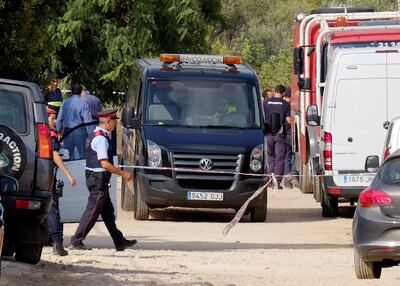Spain’s King Felipe led mourning on Sunday for the 14 victims of terror attacks in Barcelona and a nearby seaside resort as security officials faced accusations of intelligence failures.
Josep Lluis Trapero, the police chief of Catalonia, revealed that the plotters started preparations for an assault more than six months before the ramming assaults last week. The cell had managed to stockpile 120 gas canisters and an unknown quantity of improvised explosives at a repossessed seaside villa.
Their preparations had not been detected by intelligence operations despite a heightened security alert regarding Barcelona. Mr Trapero said the CIA had warned that a high-profile terrorism attempt was expected on Las Ramblas, the city’s main boulevard, during the peak summer tourist season.
Of the 12 men believed to be involved in the cell, seven were killed before or during the attacks, with two sets of remains yet to be identified, four have been arrested and one is on the run.
Younes Abouyaaqoub, the suspected driver of the van that ploughed through crowds on Las Ramblas, is thought to have escaped across the border into France after hijacking a car whose driver was later found stabbed to death.

King Felipe was joined by prime minister Mariano Rajoy and Catalonia's president Carles Puigdemont at Barcelona's Sagrada Familia church for the ceremony on Sunday to mourn those killed on Las Ramblas and at the resort of Cambrils.
"These have been days of tears, many tears," said auxiliary bishop Sebastia Taltavull.
Outside the church, snipers were posted on rooftops surrounding the landmark building, while heavily armed police stood guard as hundreds of people gathered under grey skies.
The family of a seven-year-old British-Australian boy who had been listed as missing confirmed on Sunday that he was among the 13 killed in the Barcelona attack. Julian Cadman had been walking on Las Ramblas with his mother, who survived but was seriously injured.
Teresa Rodriguez, who lives near the Sagrada Familia, said she wanted to join the outpouring of grief to show the city would defy its attackers.
"What happened in Las Ramblas is really hard for us, we go for walks there often, it could have happened to me, my children or anyone. And here we are. It's huge, huge," she said as she fought back tears.
Thousands queued outside the nearby city hall to sign the book of condolence opened by the municipality.
A ring of steel was mounted around Camp Nou, where Barcelona FC took to the pitch for the first game of the season. The 100,000 strong crowd was told in advance not to bring large bags to the ground.
Security experts expressed concerns about the emerging details of the plot. Security sources told El Pais newspaper that there had been no indicators that raised the concerns of police. "Intelligence failed," a judicial investigator said. "We were not able to detect them."
Meanwhile Spanish interior ministry sources pointed to "a serious failure to analyse information” by the provincial Catalan officials.
Despite the severe and known threat of radicalisation by Islamist extremists in the area, the authorities appear to have left gaps in the city’s defences.
“I’m shocked at what we are learning,” said Anthony Glees, a professor at the University of Birmingham. “At the end of the day there is a very obvious security lapse. Las Ramblas is an icon, Barcelona is an icon, over 30 million people visit every year and we know these people like to attack these iconic targets.”
Mr Glees said Abouyaaqoub’s potential escape to France demonstrated yet more security vulnerabilities.
“There may be a much larger support group there from a Moroccan French background. There is something in this that suggests one group is ramping up another group,’ he added.
Identifying the figures involved in radicalising the group, who have been embraced by ISIL, is a key task for investigators.
“For people to become terrorists, its highly likely there was a person radicalising them. There was an ideology and this tipped them into terrorism,” Mr Glees said.
______________________________________
Read more:
Spain attacks: who are the terrorists?
Father of Barcelona suspects blames local imam
Missing 7-year-old boy confirmed dead
_______________________________________


